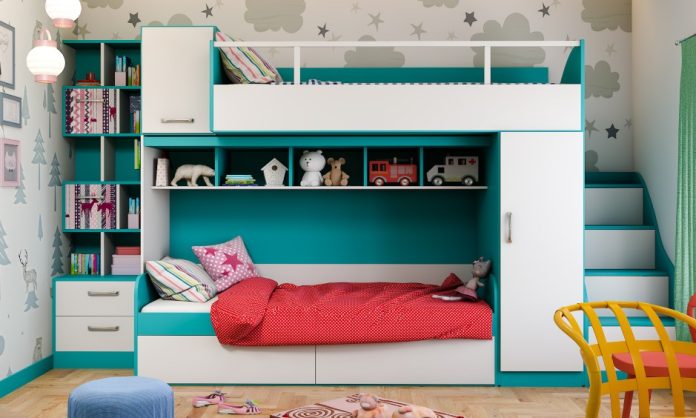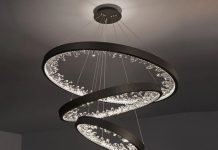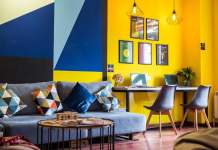Children’s rooms are a special world for them. It is important to design a child’s room functionally and stylishly. Creating spaces that are both fun and practical is a lot of fun. But it may sound a little complicated. This is where ideas for children’s room furniture come in handy.
There are a variety of clever designs and smart options that will make designing a children’s room a special experience. However, if you want to know what these design ideas are, this article is for you. In this article, we will discuss children’s room decoration ideas that you can use to beautify your child’s room.
One of the best interior design ideas for children’s rooms Designing a children’s room requires creativity, functionality, and a little bit of whimsy. Whether you’re creating a space for a toddler or a teenager, there are countless ways to make your space both visually appealing and practical. Here are the best interior design ideas for children’s rooms.
1. Theme decoration room for kids :
Themed decorations are a creative and attractive way to personalize a child’s room. This involves choosing a specific theme that suits your child’s interests and incorporating elements of that theme throughout the room. It can be anything from space to jungle adventures to fairy tales. The chosen theme guides all design decisions, creating a consistent and immersive environment.
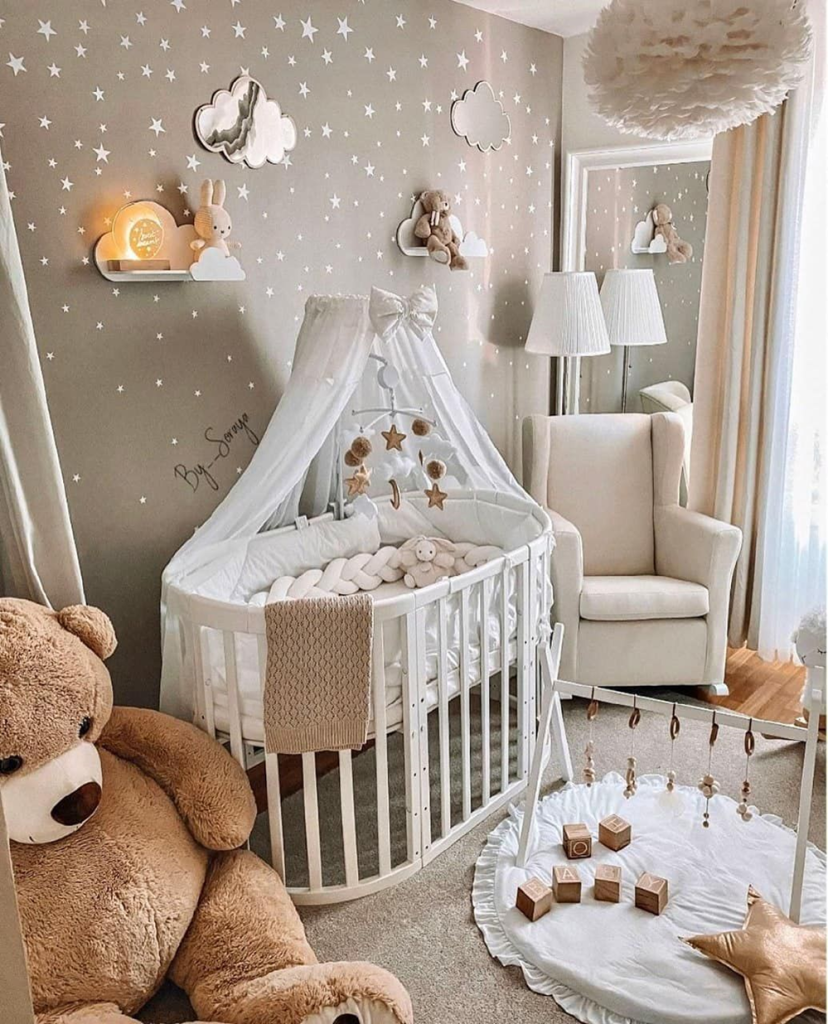
For example, if your chosen theme is “space,” your decor might include bedding depicting planets and stars, wall stickers of astronauts or spaceships, and accessories such as rocket-shaped lamps or rugs that mimic the surfaces of satellites. Masu. Similarly, a “jungle adventure” theme might include animal-print bedding, tree, and animal wall decals, and accessories like safari-style toy boxes and leaf-patterned curtains.
2. Interactive mural
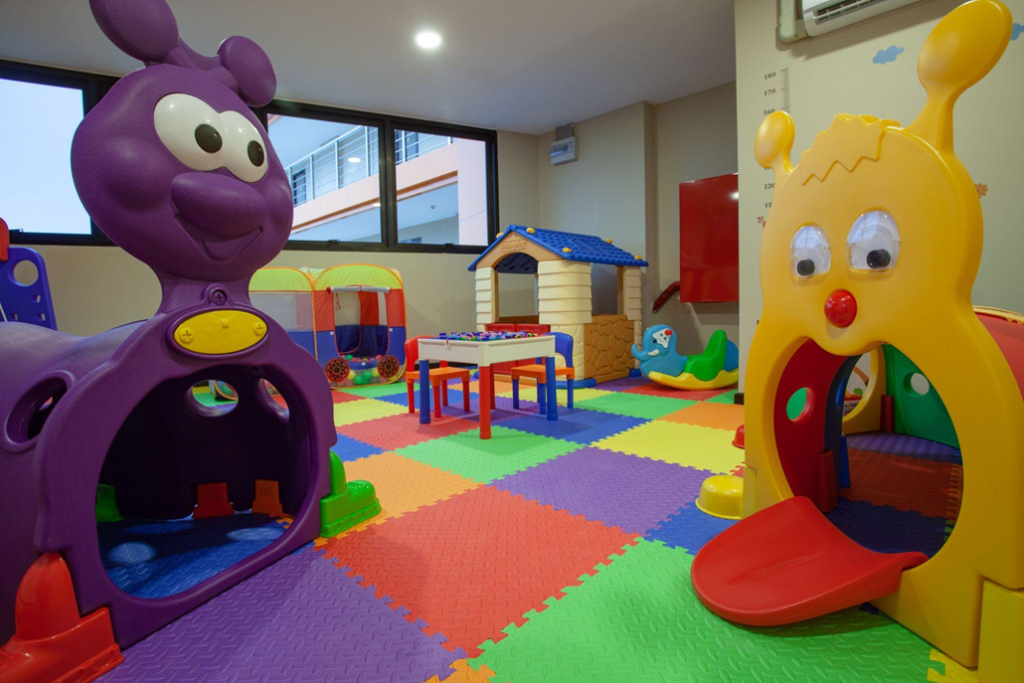
Interactive murals are a great way to personalize a child’s room and stimulate their imagination. The first step is to choose a topic that matches your child’s interests. It can be anything from space to jungle adventures, fairy tales, or any other topic your child is passionate about. Choosing a theme, becomes the central idea for the interior design of the children’s room.
The next step is to include elements that reflect your chosen theme. This can be achieved through bedding, wall stickers, and accessories. For a space theme, you can choose bedding depicting stars and planets, wall stickers depicting astronauts and spaceships, and accessories such as rocket-shaped lamps and rugs that resemble the surface of the moon.
The key is to ensure each element contributes to the overall theme and creates a coherent and immersive environment. This makes the room visually appealing and creates an interactive space for children to learn and explore their interests.
3. Functional storage solution

Creating a functional and attractive children’s room requires a thoughtful approach to storage solutions. The key is to optimize your space with multifunctional furniture that serves dual purposes. For example, a bunk bed with built-in drawers not only provides a comfortable sleeping area, but also provides ample storage space for clothes, toys, and other items. Similarly, a storage stool can be used as a chair while also providing space to store books and toys.
Wall shelves are also a great solution. Provides space to display toys, books, decorations, etc. without taking up floor space. Consider using colorful containers and baskets to keep your space organized. These can be labeled and used to store different types of toys and items, making it easier for children to find what they need and clean up after themselves. This approach to children’s room interior design not only keeps the room clean but also encourages children to be responsible for their belongings. It’s a win-win situation, combining beauty and practicality.
4. Playful lighting fixtures

The next way to design a child’s room is to incorporate playful light fixtures. This is a great way to add a little whimsy and fun to your child’s room. You can also consider installing hanging lights in the shape of balloons or clouds. It not only provides lighting but also serves as an adorable decorative element that stimulates children’s imagination.
You can also create a magical and cozy atmosphere by stringing string lights in fun shapes like stars and animals throughout the room. These light fixtures can transform your room into a playful and inviting space where kids can have fun. In addition to these decorative light fixtures, it is also important to incorporate adjustable task lighting, especially in study areas. Task lighting ensures your child has enough light for reading, writing, or other activities that require concentration.
5. Cozy Reading Corner

Creating a cozy reading corner in your child’s room can provide a special space to relax, read, and spend some quiet time. This can be achieved by placing soft bean bags or floor cushions in the corners of the room to create a comfortable and cozy space where children can relax while reading.
Having a bookshelf nearby with age-appropriate books promotes the joy of reading and gives children easy access to their favorite stories. Adding a canopy or a tent can add a magical touch to your reading nook and create a special retreat feel in the room. This can enhance the sense of adventure and imagination, which is very important in children’s rooms. Canopies or tents provide privacy and can also make your reading nook even more inviting. All in all, a well-designed reading corner can become a valuable part of a room that promotes a love of reading and provides a quiet retreat for your child.
6. Custom-made art exhibition

Displaying customized art in your child’s room is a great way to personalize the space and make it truly unique. This children’s room decoration element not only adds creativity and color to the room but also provides a platform for children to express themselves. By displaying their artwork, photos, and memorabilia, the room will reflect their personality, interests, and accomplishments. This can be accomplished through a gallery wall or bulletin board. Both are flexible and can be easily updated or changed as your child’s preferences and creations evolve. Gallery wall and bulletin board displays can be designed in a variety of ways to match the overall theme and decor of the room.
For example, you can use frames of different sizes and colors to create a versatile and vibrant display. Alternatively, you can match the frames for a more uniform look. Display layouts also vary, and can be arranged in a grid for a clean, modern look, or in a more organic, free-flowing way for a casual, playful feel. Changing out your displays regularly will keep your room looking fresh and dynamic.
This approach to the interior design of a children’s room not only enhances the beauty of the room but also encourages the child’s artistic endeavors and creates a sense of ownership and pride in his personal space.
7. Sensory playground

A sensory play area is a great addition to a child’s room, providing a stimulating and engaging environment that can support your child’s development. These areas can include a variety of elements designed to appeal to a child’s senses.
For example, a sensory table filled with kinetic sand or water beads provides a tactile experience that promotes fine motor skills and imaginative play. This type of interactive play is both fun and educational, allowing children to explore different textures and shapes while learning concepts such as volume and density.
Another great idea is to set up a mini indoor playground with slides and tunnels. This not only provides children with fun physical activity, but also helps develop gross motor skills, spatial awareness, and coordination. It can include a variety of elements such as fabric patterns, textured tiles, and interactive elements such as buttons and zippers.
This provides a rich sensory experience that is especially beneficial for sensation-seeking children or children with sensory processing issues. Overall, sensory play areas make children’s rooms more dynamic and rich, promoting learning through play.
8. Decor inspired by nature

Decorating a children’s room inspired by nature can create a calm and calming environment that stimulates a child’s imagination and curiosity. Botanical prints provide exposure to different types of plants and encourage an early appreciation for nature. Tree branch wall decals can add a playful touch and create the feeling of being in the middle of a magical forest.
The four-poster bed, covered in light fabric, gives a sense of comfort and security, reminiscent of a forest canopy. The use of natural materials such as wood and rattan not only enhances the beauty of the natural theme but also adds warmth and texture to the space. In addition to these elements, you should also consider adding other nature-themed accessories to further enhance the ambiance of the room. For example, a grass or floral patterned rug can give the room an outdoor feel.
Animal-themed pillows and curtains can bring a wildlife vibe to your room. Lighting also plays an important role in creating the desired atmosphere. Lights that cast shadows reminiscent of branches and leaves can make a room feel like it’s under a canopy of trees.
Finally, consider using a nature-inspired color palette like greens, browns, and blues to tie all the elements together and create a consistent, harmonious look. Please do not forget. The goal is to create spaces that encourage exploration, learning, and a love of nature.
Latest Blogs
- Basava Vasati Yojana 2024 – How to Apply RGRHCL Scheme
- Best Interior Designs for duplex house with color combination and space
- Property Sales &Registrations in March: High in Kokapet & Kondapur


